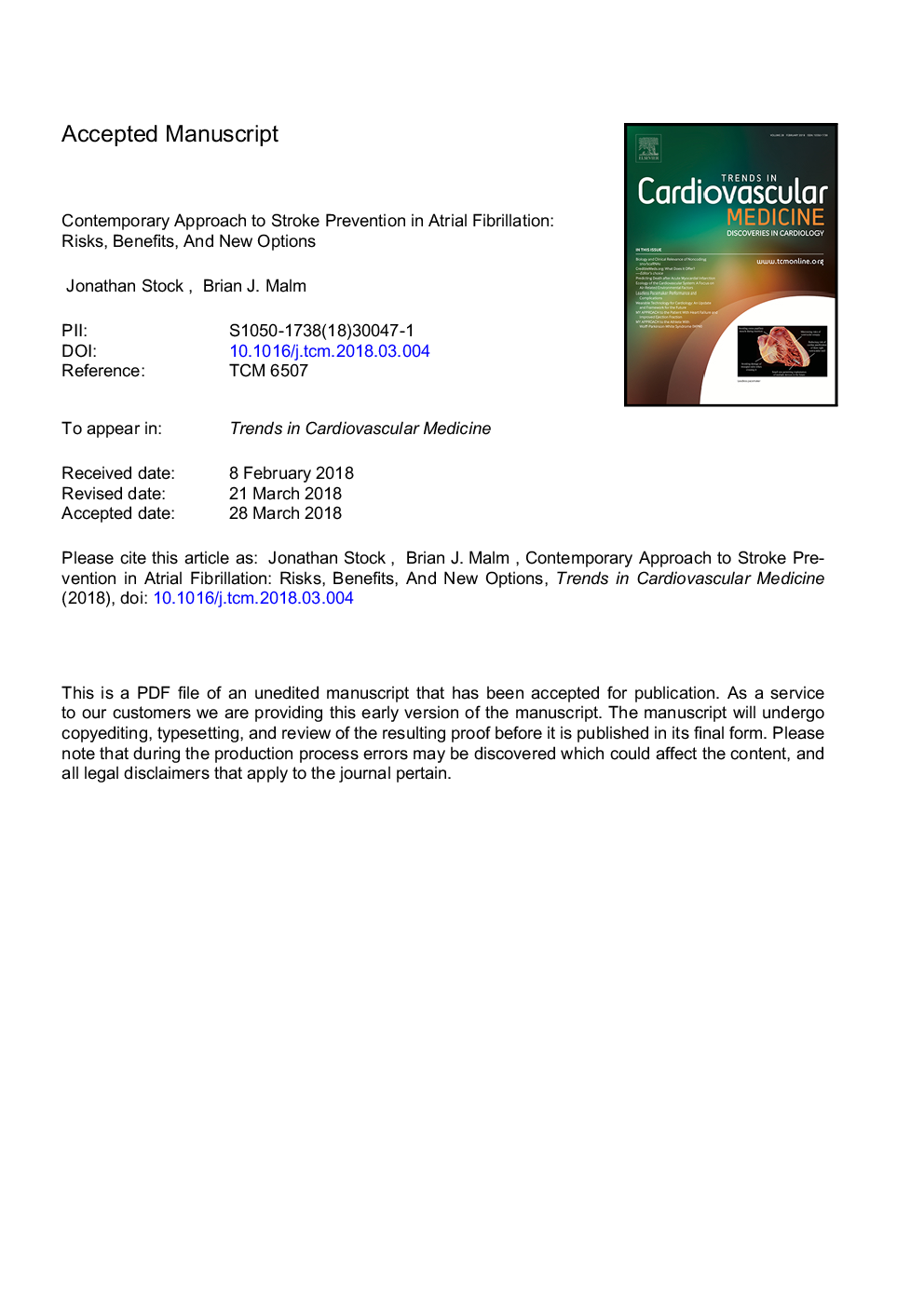| Article ID | Journal | Published Year | Pages | File Type |
|---|---|---|---|---|
| 10215280 | Trends in Cardiovascular Medicine | 2018 | 40 Pages |
Abstract
Atrial fibrillation is a common diagnosis affecting nearly 3 million adults in the United States. Morbidity and mortality in these patients is driven largely by the associated increased risk of thromboembolic complications, especially stroke. Atrial fibrillation is a stronger risk factor than hypertension, coronary disease, or heart failure and is associated with an approximately five-fold increased risk. Mitigating stroke risk can be challenging and requires accurate assessment of stroke risk factors and careful selection of appropriate therapy. Anticoagulation, including the more recently introduced direct oral anticoagulants, is the standard of care for most patients. In addition, emerging non-pharmacologic mechanical interventions are playing an expanding role in reducing stroke risk in select patients. In this review we highlight the current approach to stroke risk stratification in atrial fibrillation and discuss in detail the mechanism, risks, and benefits of current and evolving therapies.
Keywords
Related Topics
Health Sciences
Medicine and Dentistry
Cardiology and Cardiovascular Medicine
Authors
Jonathan Stock, Brian J. Malm,
